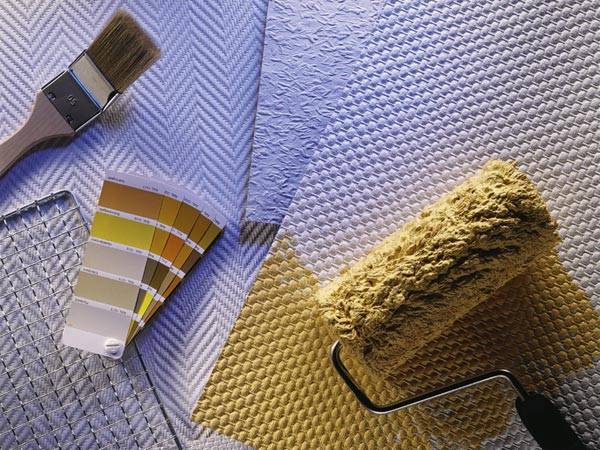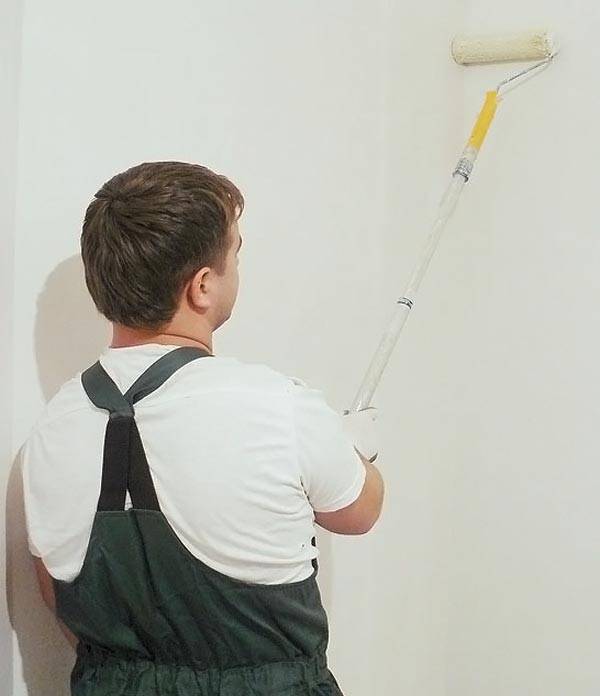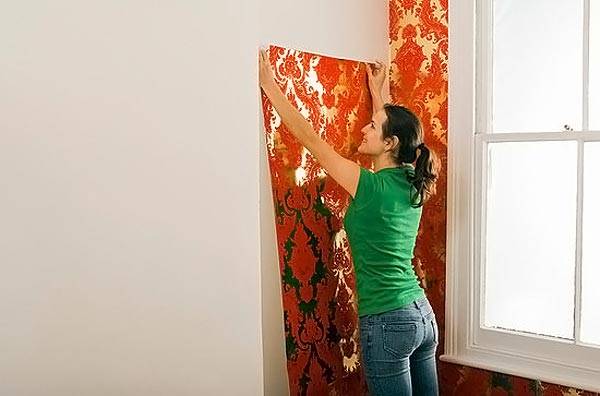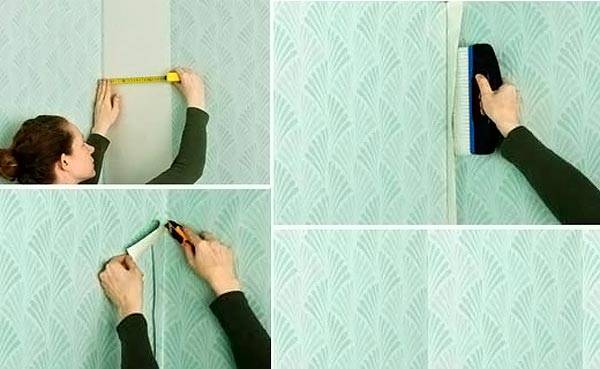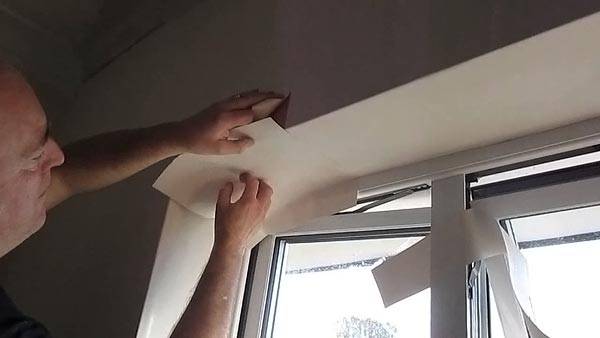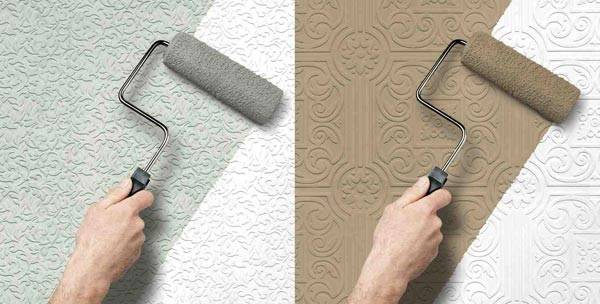Non-woven vinyl wallpaper gluing
HCostly components, easy application technology, service life of 10 years - all these advantages become the main arguments when buying a vinyl covering. We will tell you everything you need to know when making repairs. After reading the article, you will be aware of the advantages and disadvantages, distinctive features of different types. See for yourself that gluing non-woven vinyl wallpaper will be simple and profitable.
The content of the article
Types of wallpaper
Wallpaper consist of two layers: artificial coatings and base. Vinyl is a layer of PVC that is applied to a non-woven base. This material is made from paper and fabric threads and has long been used in the textile industry.
Vinyl easily imitates a variety of textures and patterns, therefore, provides ample design opportunities. It is an inexpensive and durable material from which various types of coatings are created.
- Solid. Moisture resistant, dense and at the same time breathable, because its structure consists of valves.
- Foamed. It is not resistant to moisture, but due to its relief it allows air to pass through better, helps to hide the imperfections of the walls.
- Flat. Continuous layer of printed and embossed fabric.
- Silk-screen printing. Has a special technology of drawing and shine.
- For painting. White cover with non-woven backing. Can be repainted if you want to change the style of the room.
Types of non-woven wallpaper
How to recognize non-woven wallpaper? If you see a fibrous edge when it breaks, then that material was used. These are of 2 types:
- without additives from pure non-woven fabric;
- based on non-woven fabric, which is covered with vinyl on top.
Features of gluing vinyl wallpaper on a non-woven basis and other advantages
Standard wallpaper has to be spread with glue, laid out on the floor, and carefully applied to the wall. Compared to paper products, vinyl has revolutionized the world of coatings.
Such wallpapers are a real salvation for new buildings and old houses. Microcracks that may appear on the walls due to shrinkage or other reasons will be invisible under the vinyl covering.
Advantages of non-woven coatings:
- the wall is smeared with glue, and the canvas is dry;
- the gluing process is simpler and faster;
- can be repainted 5-10 times;
- they are resistant to abrasion, service life from 7-10 years;
- meet sanitary standards;
- do not deform or shrink.
The main disadvantage of such wallpapers for many years was airtightness. Vinyl is a fairly dense material that does not allow air to pass through. Mold or mildew can form underneath. But many manufacturers have already solved this problem without changing others. wallpaper characteristics.
Features of the gluing process: preparation and stages
Stock up on construction tools!
- Knife and scissors - for cutting rolls.
- Paint roller - for applying glue to walls.
- Plastic spatula or a roller to smooth the wallpaper.
- Capacity - for mixing glue.
- Plumb line and pencil - for marking the walls.
- Small rubber roller - for rolling out joints.
Thanks to the unique properties of the materials, they can be glued even in the bathroom and kitchen. Sticking vinyl wallpaper on a non-woven base has very little in common with the standard process of laying wallpaper on the floor, impregnating with glue, etc.
You can fix the wallpaper on almost any surface, but before that it is worth preparing the walls. It should be dry, smooth and uniform. Remove all old trim (paper, tiles, plaster), and then the wall needs to be putty and primed. Apply a layer of filler for complete leveling. To achieve the correct color, primers in neutral shades should be used.
Don't skimp on glue. Buy a special type of non-woven wallpaper glue - it will reliably hold any kind of covering. You should also check all rolls for defects, pattern identity.
Stages
The features of preparation, gluing of vinyl wallpaper on a non-woven base are simple and easy to follow rules.
- Cutting.
It is necessary to cut the wallpaper so that the patterns on the adjacent stripes "fold" according to the pattern. The easiest way to do this is to cut pieces from several rolls at the same time. The length of the strip should be 5-7 cm longer than the height of the room.
- Glue application.
When mixing the mixture, follow the manufacturer's recommendations. Glue is applied to the wall with a roller, smearing the joints, corners, top with an additional layer.
- Sticking wallpaper on walls.
The first strip is glued along a vertical line. It is not so important where to start pasting, since such wallpapers are glued end-to-end. Attach the canvas to the wall, aligning from the center to the edges. The verticality is checked by a plumb line. Wide canvases are best applied from the most visible angle. Solid colors can be rolled out when pasting and cut off near the floor. The coating is rolled with a roller to remove air and bubbles.
- Pasting corners.
For glueing the corner, use a brush. It will not work to stick the wallpaper back to back, so in the corners it is done with an overlap. After that, a sharp knife is drawn along the corner line and the extra strips are cut off.
- Pasting of window niches and doorways.
Near the doorway, you should carefully cut off the part of the canvas that covers doors... While holding the wallpaper strip applied at the opening. On window openings, the excess is cut off along the edge of the window.
- Painting.
Such wallpapers are often chosen for further painting. You can see what kind of paints are suitable on the packaging or the manufacturer's website. To obtain the desired shade, the colors are mixed in a coller.
Related article:
How to glue paper backed vinyl wallpaper. The secrets of high-quality gluing of vinyl canvases on a paper basis are in a separate publication of our portal.
Do you want to become the owner of such a coating and forget about fiddling with paper rolls? Knowing all the features of the process and knowing the basic information about non-woven wallpaper, you can easily make a decision.
Workshop on gluing non-woven wallpaper






